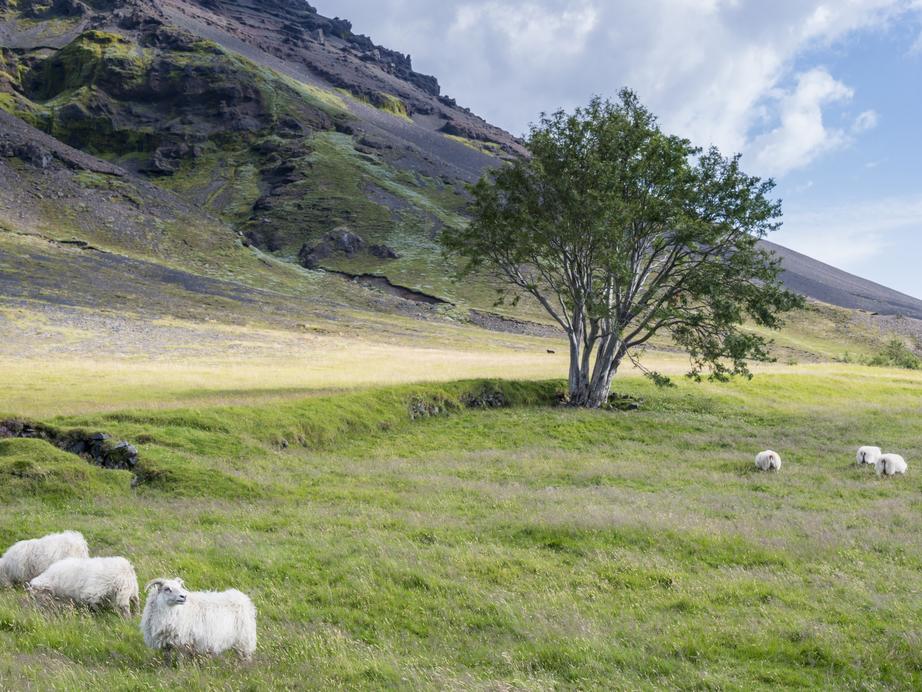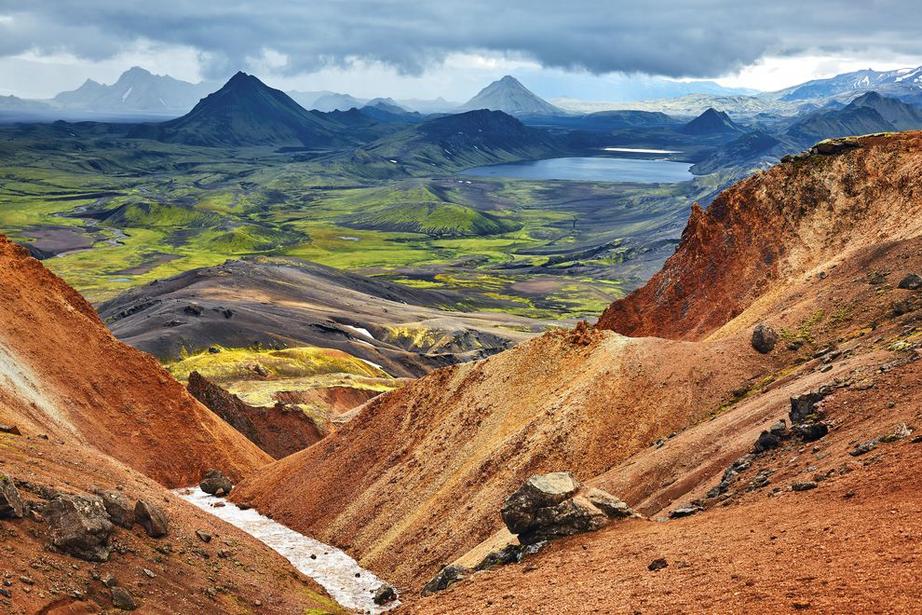How Iceland is regrowing forests destroyed by the vikings
How do you find your way out of a forest in Iceland? Stand up.
That's an old Icelandic joke about the country's meager woodlands, and like most jokes, it contains a kernel of truth. Iceland is a famously beautiful place, yet forests only cover about 2 percent of its land area, and they tend to be relatively small.
This hasn't always been the case, however. When the first Vikings arrived in Iceland more than a millennium ago, they found an uninhabited landscape with plentiful birch forests and other woodlands — spanning anywhere from 25 to 40 percent of the island. According to one early saga, "At that time, Iceland was covered with woods, between the mountains and the shore."
So what happened? The Vikings began chopping down and burning Iceland's forests for timber, and to clear space for farmland and grazing pastures. "They removed the pillar out of the ecosystem," Gudmundur Halldorsson, research coordinator for the Soil Conservation Service of Iceland, recently told the New York Times.
They also brought sheep, whose appetites for saplings made it difficult for Iceland's forests to recover. "Sheep grazing prevented regeneration of the birchwoods after cutting and the area of woodland continued to decline," explains the Iceland Forest Service. "A cooling climate (the little ice age) is sometimes cited as a possible cause for woodland decline, as are volcanic eruptions and other types of disturbance, but on closer inspection they can not explain the overall deforestation that took place."

Sheep graze in southern Iceland. (Photo: Sergey Didenko/Shutterstock)
Iceland is working to fix this, however, and regain the lost benefits of its ancient forests. Restoring the island's native tree cover could make a big difference in its soil-erosion problem, for example, reducing dust storms and boosting agriculture. It could also improve water quality and help reduce Iceland's carbon footprint.
Yet it's easier to save old-growth forests than it is to replace them, especially in a cold place like Iceland. The country has been working on reforestation for more than 100 years, planting millions of non-native spruce, pine and larch trees as well as native birch. Iceland added hundreds of thousands of seedlings per year throughout much of the 20th century, reaching 4 million annually in the 1990s and up to 6 million per year in the early 2000s. Forestry funding was cut sharply after the 2008-2009 financial crisis, but Iceland has continued adding as many as 3 million new trees annually in recent years.
This effort has helped save some of Iceland's last natural forests, and even added to them, but it's a slow comeback. The island's forest cover likely fell below 1 percent in the mid-20th century, and birch forests now cover 1.5 percent of Iceland, while cultivated forests cover another 0.4 percent. By 2100, the country aims to increase its forest cover from 2 percent to 12 percent.

A birch forest grows in Ásbyrgi canyon in northern Iceland. (Photo: kawhia/Shutterstock)
Ironically, a warming climate might make reforestation easier in Iceland. It has already raised the maximum elevation for Icelandic forestry by about 100 meters since the 1980s, the Forest Service notes, "creating the potential for afforestation of large areas on mountainsides and the periphery of the central highlands." Of course, it adds, "conditions for forestry are more complex than simply looking at annual or growing-season temperatures." And, as in most places, human-induced climate change also poses big environmental threats for Iceland, like melting its glaciers or making its native ecosystems more hospitable to invasive pests.
Iceland is wisely working to reduce its contributions to climate change — Reykjavik has set a target of becoming carbon-neutral by 2040, for example, while the country as a whole aims to reduce its carbon dioxide emissions 40 percent from 1990 levels by 2030. Adding trees is a big part of those plans, on top of the more direct benefits they offer for Iceland's soil, water and human health.
Iceland may never be a wooded wonderland, but by investing in trees, the island's leaders are restoring crucial pillars of their island's ancient ecosystem — and making sure their once-forsaken forests are no longer a joke.
For the rest of this article please go to source link below.

